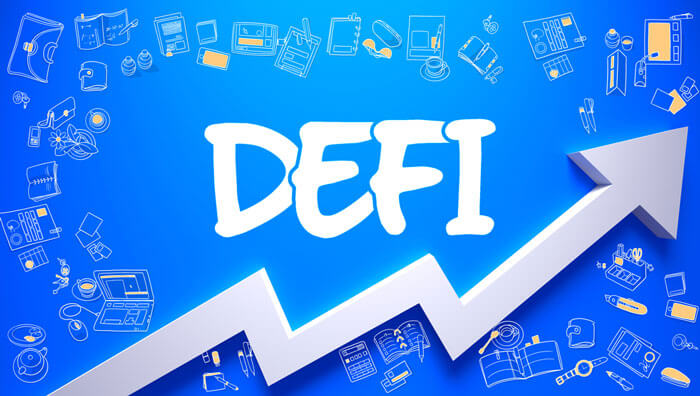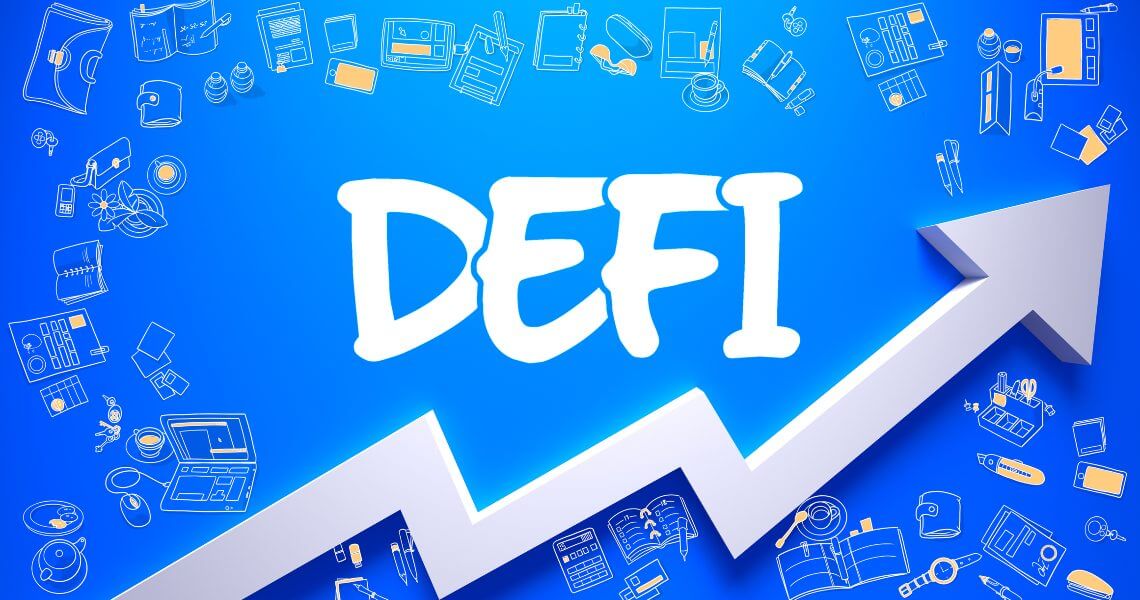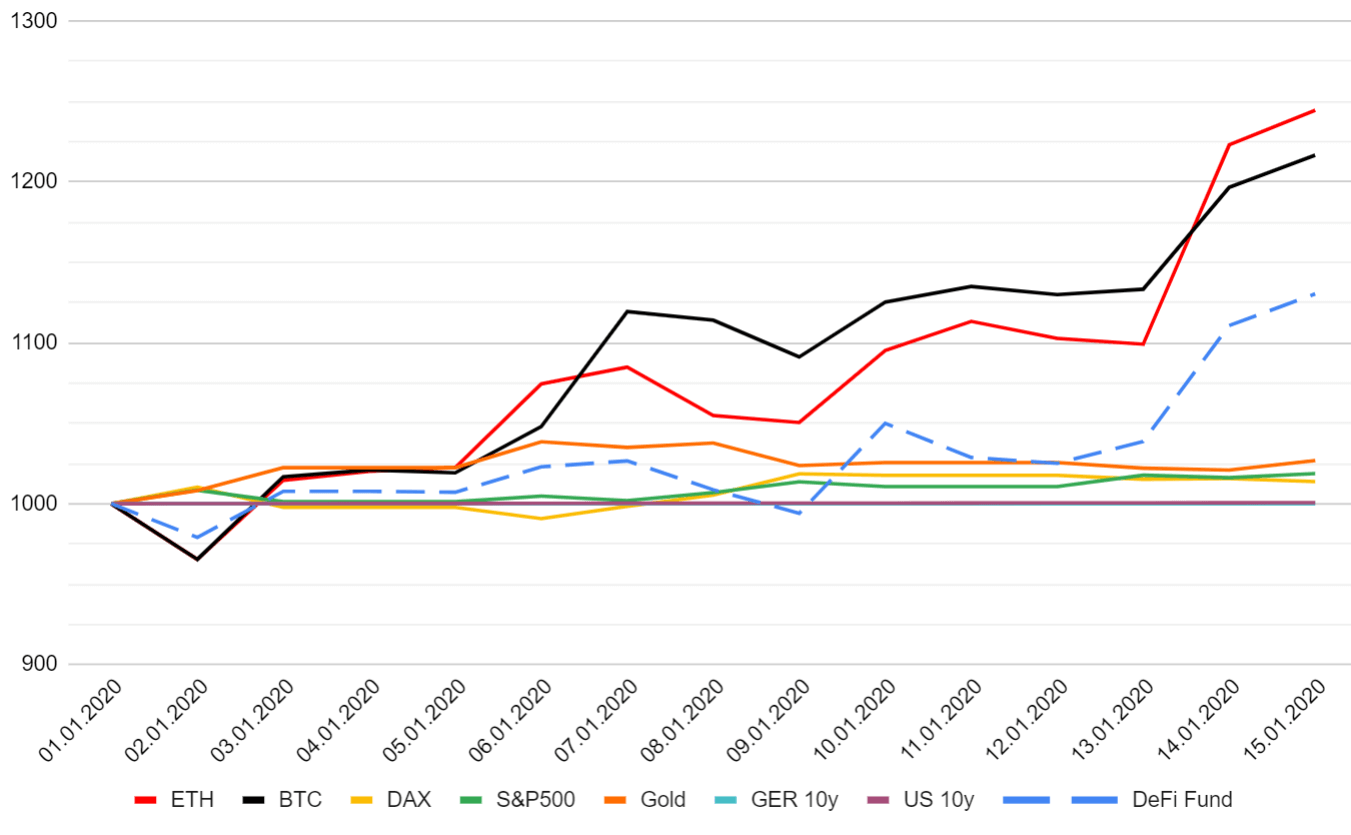The crypto space is decorated with exciting projects. In the year 2020, however, none has caught the eye as much as DeFi has. DeFi is an acronym for decentralized finance, several protocols geared towards providing financial services while eliminating a central governing authority from transactions.
In the last year alone, the total value locked in DeFi funds has grown from $850 million to stand at $14.9 billion as of 15th December. This growth is indicative of the rising appetite for investments in the sector. The excitement that DeFi has created is pulsating; it almost sucks you in. Doesn’t it?
But as a newbie, should you take the plunge? What are the investment options available to you? Are there any pitfalls you should be wary of? If you’ve asked any or all of these questions and are reading this, then you’re in the right place. Today we journey through DeFi, providing a few pointers to help you along your investment journey.
Is DeFi Worth the Hype?
The kind of interest generated by DeFi speaks volumes about the sector’s potential. But what benefits does one derive from investing in the industry? The following are a few reasons why DeFi is attractive:
- Accessibility – DeFi products are available to anyone whenever they may be; with an internet connection, one is good to go.
- Autonomy – through the elimination of central authorities, DeFi gives the users control over their financial activity.
- Transparency – all transactions take place over the Ethereum blockchain enabling their public scrutiny before verification.
- Higher returns- because of the attendant risk, the DeFi sector offers higher ROIs than legacy financial institutions.
- Increased liquidity of illiquid assets- tokenization enables the representation of previously illiquid assets on the Blockchain enabling their easy transference.
- Faster transactions – DeFi platforms allow for real-time P2P transactions saving time.
- Affordable – DeFi platforms eliminate intermediaries from fees cutting transaction costs significantly
- Borderless- DeFi allows seamless Cross-border transactions anytime, any day
What are The DeFi Investment Options Available to a Beginner?
The DeFi Sector replicates the functions of the traditional financial systems in a decentralized manner. Scanning through the sector reveals rich products for the interested investor. To the newbie, investing within the space need not be a chore. Here are a few easy pickings to set you off on your investment journey:
Decentralized Lending and Borrowing
Open lending protocols dot the DeFi landscape. These allow users with extra liquidity to loan it out to others in need of it. It works in similar ways to conventional lending. The only point of departure is that DeFi lending eliminates central authorities and intermediaries from the transactions.
Providing Credit through Smart Contracts and DApps
Smart contracts and DApps enable P2P interactions between lenders and borrowers. These tools spell out the terms of credit and repayment. Once the borrower complies with them, the platform automatically disburses the funds to their wallets.
Collateralization is Key
They, however, have to provide collateral in the form of tokens. If they default on their obligations, they cede ownership of the tokenized asset to the lender.
Yield Farming
Yield farming is also liquidity mining. It is the provision of liquidity to a Decentralized Exchange (DEX) for a reward. At the center of yield, farming are liquidity pools, which are pools of tokens governed by a smart contract. They facilitate transactions over a DEX by providing the required capital. These rewards create extra income streams for the investor.
Rewarding Contribution
Investors who contribute to liquidity pools are known as liquidity providers (LPs). They can draw profit in two ways. First, they get token rewards for funding the pool. The rewards are an incentive to keep their funds within it. These rewards help to build up one’s total holding within an ecosystem.
Decentralizing Governance
Additionally, protocols may reward their investors with governance tokens. These tokens are essential in ensuring that the platform decentralizes fully. Developers may issue the tokens in several ways:
- Through listing
- Distributing a share of the tokens to their founding community members before listing
- Rewarding LPs with governance tokens besides the yield rates
Distribution of Fees
Secondly, the liquidity providers share fees that their pool attracts. DEXs mostly use the Automatic Market Maker(AMM) approach. AMMs allow P2P token trades within the liquidity pool Users pay fees- for instance, it is 0.3% of the transaction value on Uniswap– to complete their transactions. The AMM collects all the fees and distributes them to the LPs as a reward.
Trading Over a DEX
The Decentralized Exchange (DEX) is an essential cog for the running of the DeFi protocols. They enable P2P transactions occurring in the space. There are different trading and, therefore, investment strategies one may adopt. Here we focus on a couple:
Margin Trading
Margin trading involves trading a financial asset using credit obtained from an AMM. The financial assets provide the collateral for the loan taken. After trading, they pay back the loan plus fees and keep the difference as profit. In case of a loss, the protocol will deduct the loan and expenses first. One should therefore exercise caution trading this way as they could lose the collateral.
Synthetic Assets
Synthetic assets are token representations of derivatives. These assets allow the tokenization of real-life assets, for example, property hence their trading on the Blockchain. Without them(synthetic assets), they would remain illiquid.
No-Loss Games and Lotteries
Among DeFi s wide gamut of attractive services are games and lotteries. A good example is the PoolTogether game. It’s some risk-free lottery. Here investors put their funds in a shared pot. One participant wins the profit accruing, while the rest get their funds back.
Should I be Concerned About My Investing in DeFi?
Despite its attractiveness, the DeFi sector is still in its infancy. As such, it is essential to approach investments within it cautiously. Let us now shift our attention to a few concerns besetting the sector.
- Price fluctuations – the cryptosphere as a whole is very volatile; the value of tokens and coins can spectacularly appreciate and depreciate in equal measure resulting in untold losses.
- Scalability issues – Even with the implementation of Ethereum 2.0, there’s lingering skepticism that the sector can handle bulk transactions at a go.
- Smart contract vulnerabilities – hackers have on occasions exploited vulnerabilities in some smart contracts to steal from DEXs.
- Lower liquidity compared to the traditional financial systems – even though the sector shows so much promise, its TVL pales compared to the liquidity held by mainstream finance globally.
- Over- collateralization of credit – borrowers have to stake an asset of higher value than the loans they qualify for
Stick To The Following, and You’ll Be Fine
By now, you’re getting the hang of DeFi investments. Now let’s look at some of the best practices to guarantee you a fulfilling investment journey:
i) Be Thorough in Your Research
Don’t take anyone’s word blindly. It’s good to listen to others but folks that up with your research about the market. This way, you can determine if any token is worth the time and money. It’s critical to examine:
- The token distribution,
- The team behind the project,
- The word on the street concerning the project
- Partnerships the project has drawn
- Its roadmap to implementation
The above scrutiny enables you to understand how trustworthy the project is.
ii) Spot the Opportunities
After verifying the project’s authenticity, the next step is to determine the most profitable tokens. Participating in the initial funding rounds enables you to acquire tokens affordably, enhancing your chance to turn positive returns.
Again it is essential to look at projects launching under unique funding models. Traditionally, such projects have generated a handsome profit for investors.
iii) Manage Your Risk
After identifying the ideal project, now comes the actual investing. You then proceed to find an exchange that supports the trading pair that interests you.
Proceed to place your order and set your desired stop loss value. Consider initiating a trailing stop order. You can use it to maintain the stop loss as the asset appreciates.
Final Thoughts
The DeFi sector continues to grow, buoyed by the rising demand for its products. This growth comes with many different opportunities for any crypto enthusiasts. Compared to traditional financial systems, DeFi offers convenience, practicality, and affordable transactions.
Additionally, it provides better ROIs than conventional financial systems. It’s easy to see why they could take any beginner’s fancy. That said, you should exercise prudence in your investment choices as they impact your venture’s profitability.
This article has traversed investments in the DeFi sector. It arms any newbie with the fundamentals that, if adhered to, will make their foray into DeFi a fulfilling one.




